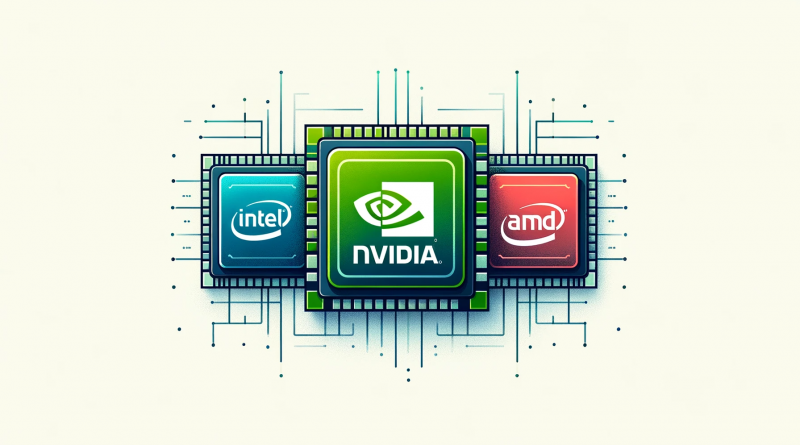Nvidia’s latest AI chips for home use face competition from Intel and AMD.
Nvidia found itself at the epicenter of the artificial intelligence revolution last year, thanks to its high-end server graphics processors like the H100, which played a crucial role in training and deploying generative AI models like OpenAI’s ChatGPT. Now, Nvidia is emphasizing its prowess in consumer GPUs designed for what’s known as “local” AI, enabling AI computations on personal computers or laptops in homes or offices.
Recently, Nvidia unveiled three new graphics cards – the RTX 4060 Super, RTX 4070 Ti Super, and RTX 4080 Super – with prices ranging from $599 to $999. These cards boast additional “tensor cores” optimized for running generative AI applications. Furthermore, Nvidia will collaborate with laptop manufacturers like Acer, Dell, and Lenovo to incorporate these GPUs into their products.
The surge in demand for Nvidia’s enterprise-grade GPUs, which come with hefty price tags and are often used in systems with multiple GPUs, resulted in a significant boost in Nvidia’s overall sales and a market value exceeding $1 trillion.
Although Nvidia’s GPUs have historically catered to gaming, the company has revamped this year’s graphics cards with a focus on running AI models locally without relying on cloud-based processing. While primarily intended for gaming, these consumer-level graphics chips are also adept at handling AI tasks. For instance, Nvidia claims that the RTX 4080 Super can perform AI video generation 150% faster than its predecessor. Additionally, Nvidia has introduced software enhancements that promise a fivefold increase in processing speed for large language models.
Justin Walker, Nvidia’s senior director of product management, highlighted the massive installed base of 100 million RTX GPUs, which serve as powerful AI-capable PCs for a variety of applications.
Nvidia anticipates the emergence of new AI applications in the coming year, capitalizing on the enhanced computing power. Microsoft is set to release a new version of Windows, Windows 12, designed to take full advantage of AI chips.
The new chip is versatile and can be used for tasks such as generating images using Adobe Photoshop’s Firefly generator or removing backgrounds during video calls. Nvidia is also developing tools to enable game developers to integrate generative AI into their titles, such as generating dialogues for non-player characters.
Nvidia’s recent chip announcements indicate its intention to compete in the local AI space alongside rivals Intel, AMD, and Qualcomm. All three competitors have introduced new chips designed to power “AI PCs” equipped with specialized components for machine learning.
This move by Nvidia aligns with the ongoing industry exploration of efficient ways to deploy generative AI, which demands substantial computing power and can be cost-prohibitive when run on cloud services. One solution gaining traction, supported by Microsoft and Nvidia’s competitors, is the concept of the “AI PC” or “edge compute.” Instead of relying on powerful remote supercomputers, these devices incorporate robust AI chips that enable the execution of large language models or image generation, albeit with some trade-offs and limitations.
Nvidia suggests a hybrid approach, utilizing a cloud model for complex tasks and a local AI model for quick, low-latency operations. This strategy is aimed at optimizing the strengths of both cloud-based and local AI processing.
Moreover, Nvidia’s new graphics cards will adhere to export controls and can be shipped to China, providing an alternative for Chinese researchers and companies that may not have access to Nvidia’s most powerful server GPUs.

